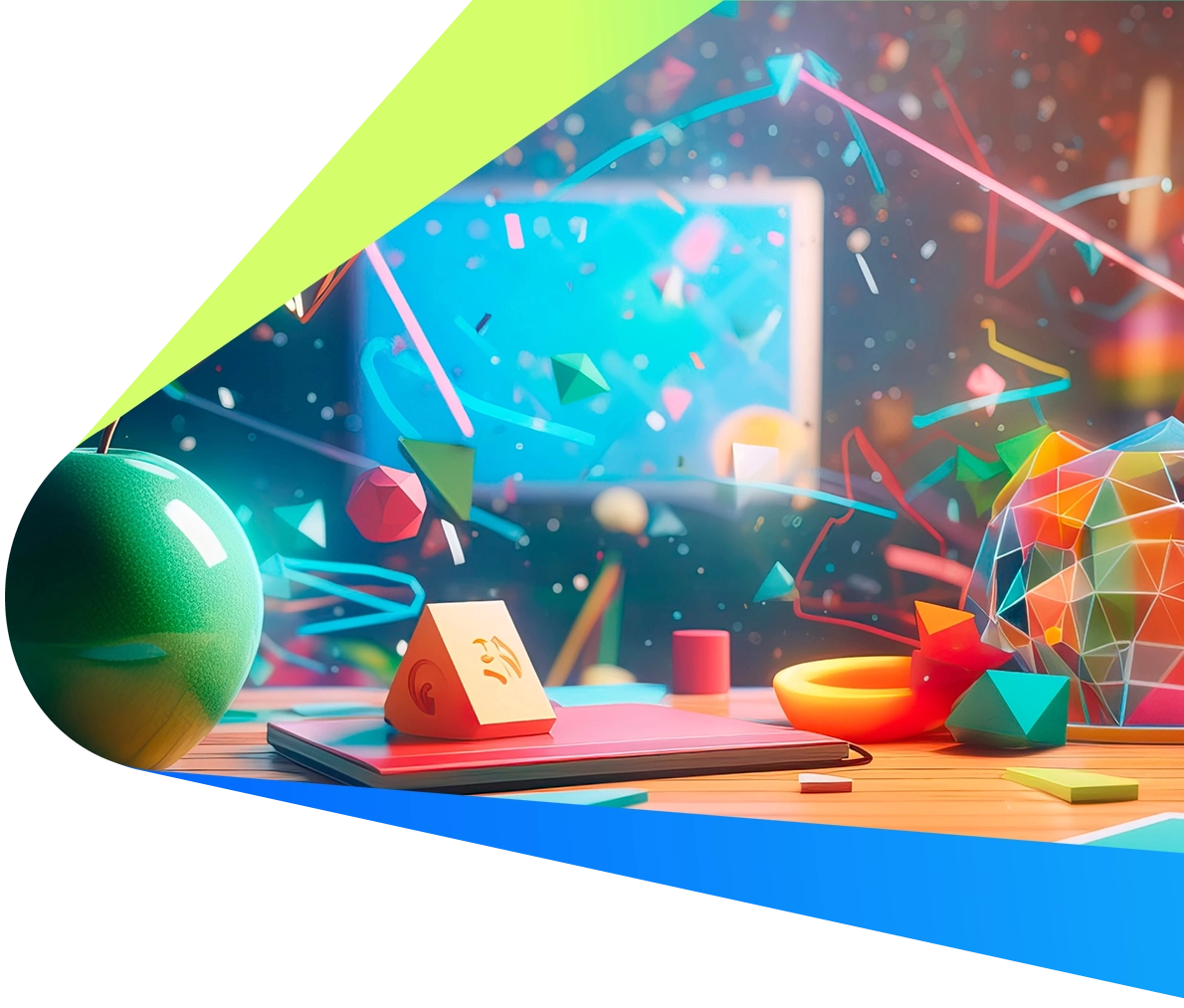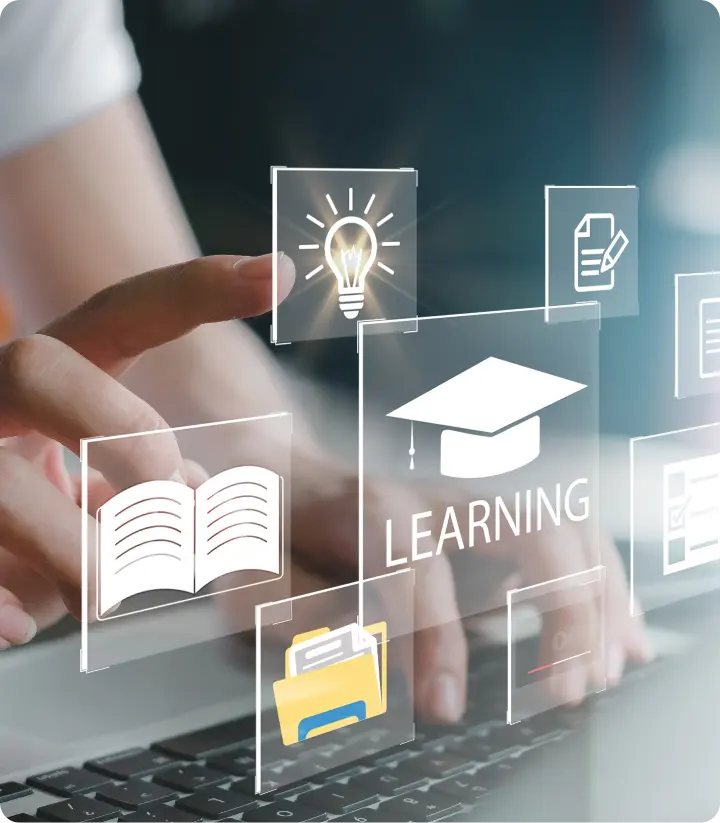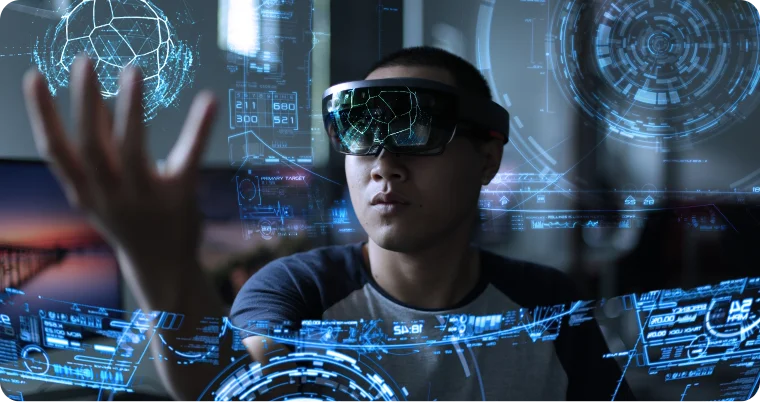
Our expertise translates into tangible results—innovative digital learning products carefully conceptualized, designed, and produced to meet the unique educational needs of our customers. Whether managing comprehensive end-to-end projects, covering design to delivery, or handling standalone components of specific digital product types, our teams are equipped to address a variety of educational requirements.
Our diverse team, bringing expertise in instructional design, technology integration, content development, and project management, works cohesively to ensure each product seamlessly aligns with our customers’ business and educational objectives. This underscores our commitment to delivering tailored and effective learning solutions.

Here are a sample of product types we build for our customers. These could be standalone digital learning products or an end-to-end courseware that will consist of a mix of various digital learning product types.
Videos and video-based animations are versatile instructional tools that can perform a variety of cognitive functions for learners.

Educational videos come in different forms, such as:
Break down complex topics into bite-sized, animated chunks.
Bring concepts to life with engaging characters and storylines.
Use hand-drawn elements to explain ideas step-by-step.
Let viewers choose their path and actively participate in the learning process.
Videos can be used as standalone learning material, or combined within any pedagogical framework to support the required learning goals.
An eLearning courseware is a structured course of study, typically delivered through a learning management system that will include a variety of multimedia elements as lessons such as:
Clear explanations and visually engaging resources.
Opportunities to check your understanding and master key skills.
Quizzes, games, and simulations to bring concepts to life.

Digital courseware can be designed using any online-friendly pedagogy and instructional framework to ensure the required learning outcomes are met. Depending on the specific LMS, your courseware may also include:
Forums, chats, and other tools for interacting with peers.
Easily find what you need and manage your learning experience effectively.
Forums, chats, and other tools for interacting with peers.
Media is an integral part of eLearning offerings as the instructional focus is to enhance learners’ understanding of concepts and support learning goals through evidence-informed visual communication strategies.

The use of photos and illustrations in e-learning offerings adds significant value by enhancing engagement, comprehension, and retention for learners. Illustrations, such as diagrams, infographics, and visual representations, provide a visual context to complex concepts, making the content more accessible and easier to understand.
2D and 3D design services play a pivotal role in enhancing the quality and impact of e-learning offerings. Complex concepts can be simplified and made more comprehensible through appropriate 2D or 3D visual representations.
3D designs, in particular, offer a more immersive and interactive learning experience. They enable simulations and virtual environments, allowing learners to engage with the content actively.
Instructor-led training or virtual instructor-led training is a format of training that have a classroom component, either fully or partly as the core educational experience. A plethora of support material is required to make this training format a success for both instructors and students.
This comprises material such as:
Class presentations
Instructor and student manuals
Instructor guides
In-class student handouts
Supplementation study material
Quizzes/exams/assignments

Scenarios and simulations are powerful immersive tools that allow learners to go beyond theoretical concepts by offering real-world challenges. While scenarios present decision-making situations within a narrative, simulations immerse learners in lifelike environments, allowing them to actively participate in hands-on experiences.

Scenarios are principle-based tasks that focus on interactions or decisions requiring judgment from learners. These tasks involve understanding cause-and-effect relationships. Opting for a choice necessitates students to evaluate the specific situation, process relevant knowledge, and exercise judgment. Experiences are designed in various formats, including:
Single-question explorations.
Multiple decision points along a predetermined path.
Emphasizing strategic tasks and decision-making, such as making a sale or evaluating a loan application.
These emphasize strategic tasks and decision-making, such as making a sale or evaluating a loan application.
Simulations are immersive, interactive experiences that replicate real-world situations, providing learners with opportunities to bridge the gap between theoretical knowledge and practical application. Simulations create lifelike environments to enhance various cognitive functions, including problem-solving and critical thinking.
Examples of simulations include:
In the field of science, virtual labs can replicate experiments, allowing students to explore concepts that mimic real-world laboratory work, such as virtual dissections in biology, chemical reactions in chemistry, and physics experiments in motion and pendulum swings.
Gamification is the process of applying game mechanics and game design elements into non-game contexts, such as business through rewards, competition, and interactive challenges.
It often includes features like points, badges, leaderboards, and other game-like mechanics to make the educational experience more motivating and interactive.

Focuses on the framework that supports learners’ progress through content.
Examples include gamified platforms, mobile apps, and course structures.
Emphasizes designing the content itself to be more game-like and engaging. Involves integrating game elements directly into the content, such as in learning activities and assessments.
Structural gamification is essential for students to have a game-like experience in the program, but when it is supported by corresponding content experiences, the overall program design has the capacity to move beyond engagement to competence.
Game-based learning refers to using actual games or game-like simulations as a central component of the learning experience.
These games often have clear learning objectives and are integrated into the curriculum. The structured nature of games allows for immediate feedback, facilitating continuous improvement.

In K-12 settings, educational games captivate students’ attention, turning lessons into interactive challenges.
Examples:
In corporate training, games serve as effective tools for skill development and knowledge retention.
Examples:
These examples demonstrate how incorporating games into corporate training not only maintains employee interest but also cultivates practical, job-relevant skills.
Augmented Reality (AR) and Virtual Reality (VR) stand as powerful and immersive technologies, each with distinct characteristics, delivering unique and impactful educational experiences.

AR overlays digital content onto the real world, enhancing the user’s perception by blending virtual elements with the physical environment. AR usually requires devices like smartphones or tablets equipped with cameras. AR enhances textbooks or learning materials with interactive elements. For instance, pointing a smartphone at a book might reveal 3D models. Or it can simulate scientific experiments, allowing students to interact with virtual elements alongside real-world objects.
VR immerses users in a completely virtual environment, isolating them from the real world. VR requires headsets that cover the user’s field of view entirely, shutting out the physical world. VR is effective for hands-on training in fields like healthcare or aviation, allowing users to practice in a realistic virtual environment. Or enable students to explore distant places or historical sites without leaving the classroom.